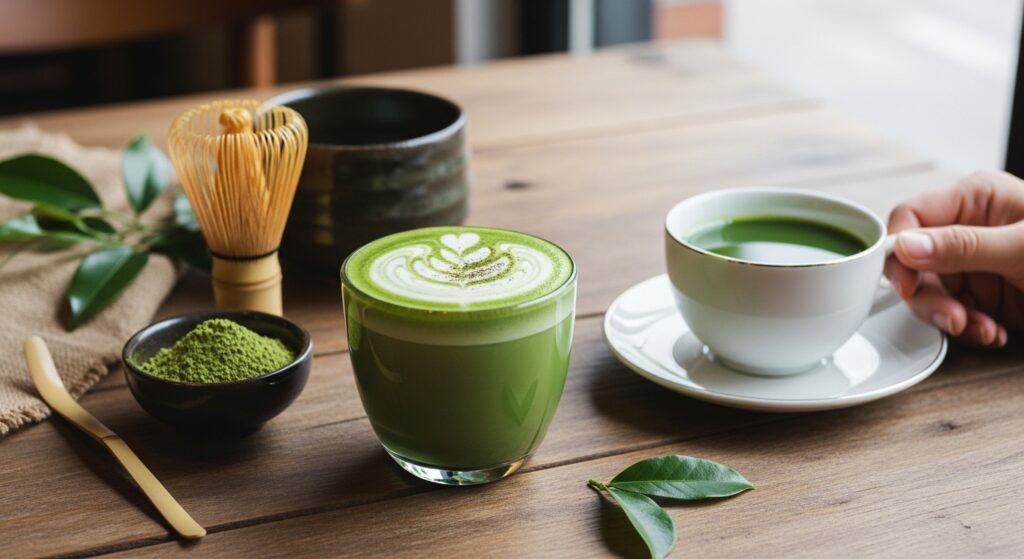In today’s world of wellness and mindful living, matcha has emerged as more than just a trendy beverage—it’s a cultural staple, a health powerhouse, and a sensory experience unlike any other. But for many first-time drinkers, a pressing question arises: what does matcha taste like?
The answer is both simple and complex. Matcha’s flavor profile is layered, unique, and deeply tied to its origins, preparation, and quality. This article explores the taste of matcha in depth, unpacking its sensory qualities, cultural context, and why this green tea continues to capture global attention.
What Is Matcha?
Before diving into flavor, it’s important to understand what matcha is. Matcha is a finely ground powder made from shade-grown green tea leaves. Unlike traditional steeped tea, where leaves are infused and discarded, matcha involves consuming the entire leaf in powdered form. This results in a richer concentration of nutrients—and a more intense flavor.
Matcha has been central to Japanese tea culture for centuries, symbolizing mindfulness, purity, and connection. Today, it’s a global phenomenon found in lattes, smoothies, desserts, and even savory dishes.
What Does Matcha Taste Like?
The flavor of matcha is often described as:
-
Earthy: A grounding, vegetal taste similar to fresh spinach or wheatgrass.
-
Umami-rich: A savory depth that lingers on the tongue, often compared to broth-like richness.
-
Sweet: High-quality ceremonial matcha carries a natural sweetness that balances its grassy notes.
-
Slightly Bitter: Lower-grade matcha, often used for cooking, may taste sharper and more astringent.
The first sip of matcha can surprise newcomers. Unlike coffee or black tea, it’s not about bold sharpness but rather a layered harmony—creamy, grassy, and subtly sweet all at once.
Factors That Influence Matcha’s Taste
Not all matcha tastes the same. The flavor can shift dramatically depending on:
-
Quality Grade
-
Ceremonial Grade: Smooth, sweet, and vibrant. Best for traditional whisked tea.
-
Culinary Grade: Stronger, more bitter—ideal for lattes, baking, or cooking.
-
-
Growing Conditions
Matcha leaves are shade-grown before harvest, boosting chlorophyll and amino acids. The longer the shading, the deeper the umami flavor. -
Preparation Method
-
Traditional whisking with hot water yields a frothy, balanced cup.
-
Adding milk (as in lattes) softens bitterness and adds creaminess.
-
Blending in smoothies or desserts transforms the flavor profile entirely.
-
-
Freshness
Matcha is highly sensitive to air, light, and heat. Fresh matcha tastes bright and smooth, while stale powder loses vibrancy and becomes dull or bitter.
The Sensory Experience of Matcha
When asking what does matcha taste like, we must also consider texture, aroma, and aftertaste:
-
Texture: Silky, almost creamy, due to its fine powder suspended in water.
-
Aroma: Fresh, grassy, and slightly sweet.
-
Aftertaste: Lingering umami that encourages slow sipping.
This multi-sensory profile is why matcha isn’t just a drink but an experience—calming, invigorating, and grounding.
Matcha in Comparison to Other Flavors
To better understand, here’s how matcha compares to familiar tastes:
-
Versus Green Tea: Matcha is more concentrated, with stronger umami and less bitterness.
-
Versus Coffee: Coffee is bold, acidic, and roasted, while matcha is smooth, vegetal, and mellow.
-
Versus Spinach or Kale: Similar vegetal notes, but matcha is sweeter and more savory at once.
Think of matcha as the green, creamy cousin of both tea and vegetables—complex but balanced.
How to Appreciate Matcha’s Taste
For beginners, the first sip may feel unusual. To appreciate it fully:
-
Start with ceremonial grade to experience the smoothest flavor.
-
Prepare traditionally with hot (not boiling) water and whisk until frothy.
-
Try adding milk or honey if you prefer a gentler introduction.
-
Explore matcha in different recipes—from ice cream to energy bites—to find your preferred flavor pairing.
Like wine or specialty coffee, matcha develops an acquired appreciation the more you taste and experiment.
Beyond Flavor: Why Matcha Matters
While flavor is key, the rising popularity of matcha isn’t just about taste. It’s about lifestyle and wellness.
-
Calm Energy: Matcha contains both caffeine and L-theanine, creating alertness without jitters.
-
Antioxidant Power: Rich in catechins, it supports overall health.
-
Cultural Connection: Drinking matcha ties modern consumers to centuries of tradition.
Thus, what does matcha taste like isn’t just a sensory question—it’s a cultural and holistic one.
Common Misconceptions About Matcha’s Taste
-
“It’s always bitter.” Not true—high-grade matcha is naturally sweet.
-
“It tastes the same everywhere.” Quality, storage, and preparation make all the difference.
-
“It’s only for tea.” Matcha’s unique taste enhances savory dishes, desserts, and even cocktails.
The Modern Appeal of Matcha’s Taste
In the digital age, matcha has become a symbol of wellness aesthetics. Instagram feeds brim with its bright green hue, while TikTok recipes reinvent its uses. This popularity ties back to its flavor: unique enough to stand out, versatile enough to adapt.
Younger generations especially embrace matcha because its taste reflects values they care about—authenticity, naturalness, and balance.
Challenges and Opportunities in Matcha Appreciation
For some, the grassy notes of matcha are an acquired taste. Challenges include:
-
Finding authentic, high-quality matcha amidst cheaper, bitter imitations.
-
Adjusting to the earthy umami if you’re used to sweetened beverages.
-
Preparing it correctly—too hot water can scorch the powder and ruin the flavor.
Yet these same challenges create opportunities to explore. Learning the nuances of matcha deepens appreciation, making each cup a mindful ritual rather than just another drink.
Looking Ahead: Matcha’s Flavor Legacy
So, what does matcha taste like? The short answer: earthy, umami-rich, slightly sweet, and unlike anything else. The long answer is far richer, shaped by centuries of tradition, meticulous cultivation, and the evolving ways we prepare and enjoy it.
As matcha continues to spread across global cultures, its flavor will remain its strongest ambassador—a taste that is complex, calming, and timeless.







